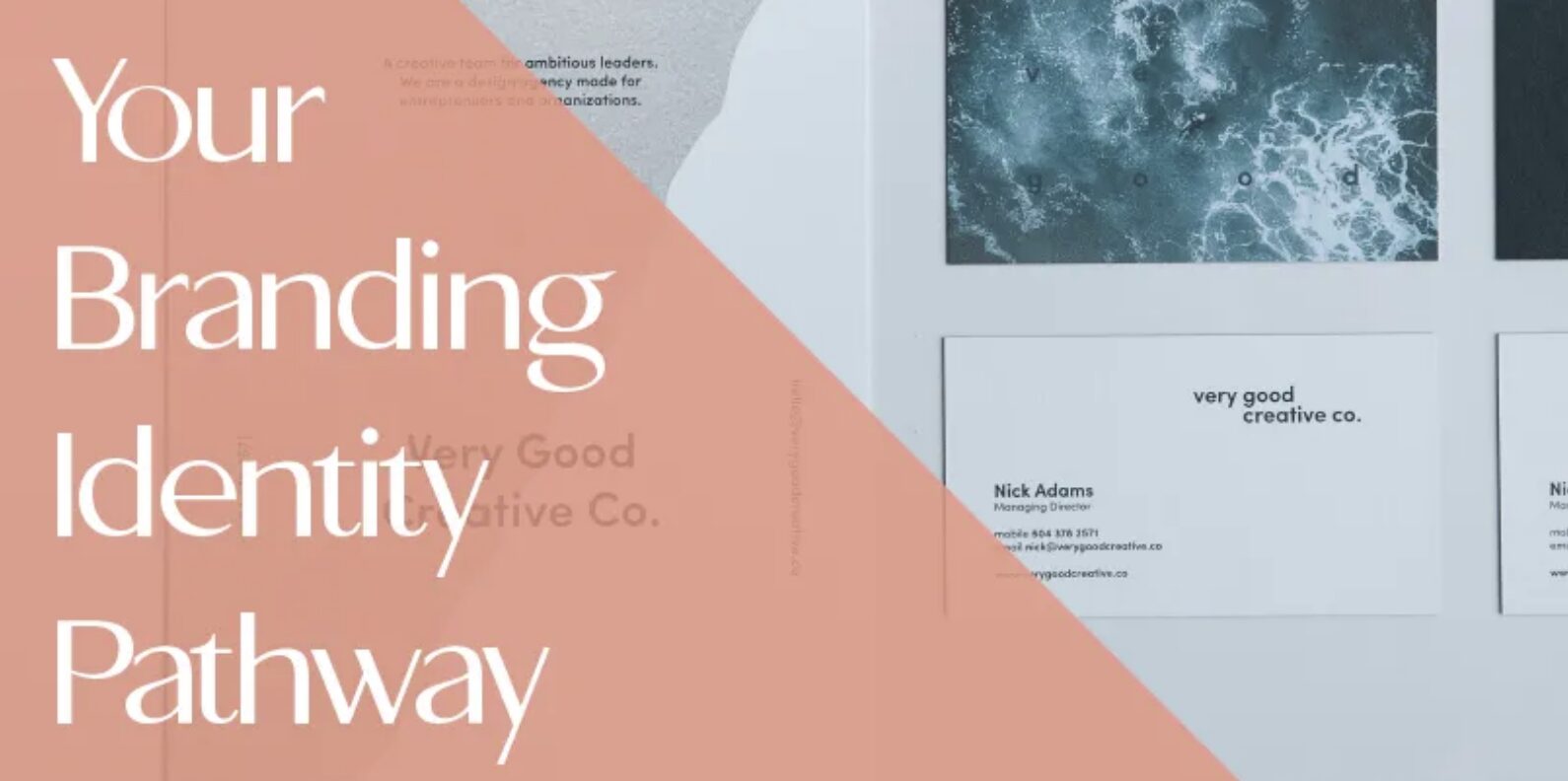When we build a brand, we build an experience that reflects a purpose. Visual identity is a huge part of this brand experience. Colours, graphics and fonts turn brand concepts into visual identities that can be recognised.
Once a brand is established, it needs to become a recognisable identity that the external world can perceive. This recognition comes with consistency, and achieving that consistency requires a strong Brand identity system.
What is a brand identity?
A brand identity is a guide that demonstrates the full visual experience of a brand including colour, texture, photography, videography, type and more. The goal of a visual identity system is to communicate the brand clearly to internal design stakeholders so that they can consistently communicate the brand to external audiences.
How To Create a Brand Identity Pathway
Step 1: Develop the Brand Identity
A brand identity starts with knowing how your business works inside and out. This includes the logo, fonts and brand colours. Ideally, you’ll have these in a style guide already, but if you don’t, here’s a great way to develop them.
Step 2: Create a Mood Board
Mood boards are similar to a visual identity but depict far more than a logo and colour scheme. Mood boards go a step further in displaying photographs, video and even audio or scents to get a well-rounded feel for a brand.
Mood boards are helpful in gaining inspiration and feedback from stakeholders about what the official visual identity system might look like once it’s finished.
Step 3: Get Feedback
Sounds simple enough, right? But this can be a step in the process that you revisit several times before settling on the perfect draft of your visual identity system.
Step 4: Include Guidelines
In order for a brand identity to work well, it’s important to include guidelines for using each element. These guidelines answer specific questions “How do designers create new content without breaking the consistency?” and “How does a website developer understand what the website should look like?”
It’s important to be very specific and particular with the guidelines so that there is little confusion and designers can develop discernment about best practices for using the visual identity system.
Once you have them in place, it’s time to add guidelines for each element. There are several ways you can structure this, but here are some of common ones:
- Dedicate a page to each element and include guidelines on the same page as the element.
- Add an FAQ sheet explaining the guidelines for each element.
- Add samples of do’s and don’ts so the team sees real-world examples of the guidelines in action.
Brand identity Basics
If you want to build your visual identity system to make your brand stand out from the crowd, here are some best practices that can help you avoid common mistakes and achieve great results.
Know your message.
Know your message, purpose and how you want to talk to your audience. Brand identity basics need a strong foundation to succeed. Think about those values you want to share and the misconceptions you want to avoid at all costs. Create a schedule that prioritises your main goals and allows you to create results aligned with your values.
Knowing what you want to communicate will help you build a message that is not only profitable but also aligns with your values.
Have a strong theoretical background.
Do you know that psychology studies the foundations of the relationship between colours and feelings? Have you noticed that a message can be read as scary or romantic based on your font? If you have this information, you can shape how people visually perceive your brand. Psychology tells us a lot about colours and how they can affect people’s perception of our brands.
Create an effective system.
Create an effective but scalable system so it can be upgraded based on your brand and business needs. The main goal of any system is to make things easier. That should be on top of every requirement that comes along the way.
Visual identity system examples are successful if they show the potential to scale without losing their efficiency.
Be specific.
Be as specific as possible! Choosing details like the stock photos that suit the brand can make all the difference.
Making things clear can be incredibly helpful for new team members who don’t have the brand background needed to understand the virtual identity system basics by themselves.
Create an Amazing Visual Identity System.
Building a system is a concept that sounds more technical and specialised, which makes it hard to start. But, the truth is, even if you have just a bunch of tasks together, you’re already building the first steps towards your system creation. You’re close to the goal.
Systems can make everything easier, even if you start small with many questions. You will learn the details along the way.
Have you created a strong visual identity system? If you haven’t, today is the day to start. Get in touch with us at hey@wildandfree.com.au today for all you need to know about creating a strong visual identity.






